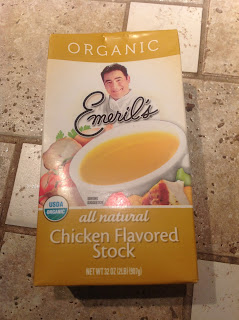Wow - what a great price for organic chicken stock, right? Read the label more closely (as I should have). What the hell is organic "chicken flavored" stock? Think reading the ingredients list will clear it up?
So for a little clarity on the matter, I visited www.organic.org . Here is what their Web site said.
"100% Organic—Foods bearing this label are made with 100% organic ingredients* and may display the USDA Organic seal.
Organic—These products contain at least 95–99% organic ingredients (by weight). The remaining ingredients are not available organically but have been approved by the NOP. These products may display the USDA Organic seal.
Made With Organic Ingredients—Food packaging that reads “Made With Organic Ingredients” must contain 70–94% organic ingredients. These products will not bear the USDA Organic seal; instead, they may list up to three ingredients on the front of the packaging.
Other—Products with less than 70% organic ingredients may only list organic ingredients on the information panel of the packaging. These products will not bear the USDA Organic seal."
I really try to not get bogged down in the minutia of it all, but sometimes reading labels is important. Now if I had to choose between a packaged treat full of GMOs and pesticides and something only "made with organic ingredients", the I'd go with the latter. But sometimes I find myself reading the label and finding a red flag, like the conventional strawberries. In that case I just choose another product entirely. Shopping organically on a budget means you have to be flexible and not necessarily have your heart set on 100% Organic Strawberry Cereal Bars, cause guess what? They don't exist.
And just in case you need the 2013 Dirty Dozen, Clean Fifteen list:
12 Most Contaminated
- Peaches
- Apples
- Sweet Bell Peppers
- Celery
- Nectarines
- Strawberries
- Cherries
- Pears
- Grapes (Imported)
- Spinach
- Lettuce
- Onions
- Sweet corn (maybe technically low in pesticides, but I limit this due to GMO concern. Sweet corn used to be mostly non-GMO but has changed in the last few years. In a word: Monsanto)
- Pineapples
- Avocado
- Cabbage
- Sweet peas
- Asparagus
- Mangoes
- Eggplant
- Kiwi
- Cantaloupe (domestic)
- Sweet potatoes
- Grapefruit
- Papayas
- Mushrooms

.jpg)
No comments:
Post a Comment